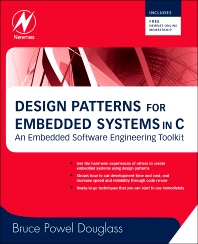Books in Computer science
Books in Computer science
The Computing collection presents a range of foundational and applied content across computer and data science, including fields such as Artificial Intelligence; Computational Modelling; Computer Networks, Computer Organization & Architecture, Computer Vision & Pattern Recognition, Data Management; Embedded Systems & Computer Engineering; HCI/User Interface Design; Information Security; Machine Learning; Network Security; Software Engineering.
- 4th Edition
- October 18, 2010
- Joe Celko
- English
- Paperback9 7 8 0 1 2 3 8 2 0 2 2 8
- eBook9 7 8 0 1 2 3 8 2 0 2 3 5

Joe Celko's SQL for Smarties
- 1st Edition
- October 15, 2010
- David Loshin
- English
- Paperback9 7 8 0 1 2 3 7 3 7 1 7 5
- eBook9 7 8 0 0 8 0 9 2 0 3 4 4

The Practitioner's Guide to Data Quality Improvement
- 1st Edition
- September 27, 2010
- Gareth R. James
- English
- Paperback9 7 8 1 5 9 7 4 9 5 8 2 0
- eBook9 7 8 1 5 9 7 4 9 5 8 3 7

Citrix XenDesktop Implementation
- 1st Edition
- September 27, 2010
- Lars Vage + 1 more
- English
- Paperback9 7 8 1 8 4 3 3 4 6 0 2 9
- eBook9 7 8 1 7 8 0 6 3 1 8 1 3

News Search, Blogs and Feeds
- 1st Edition
- September 25, 2010
- Ana Dubnjakovic + 1 more
- English
- Paperback9 7 8 1 8 4 3 3 4 5 9 7 8
- eBook9 7 8 1 7 8 0 6 3 0 4 7 2

A Practical Guide to Electronic Resources in the Humanities
- 1st Edition
- September 24, 2010
- Abby Clobridge
- English
- Paperback9 7 8 1 8 4 3 3 4 5 9 6 1
- eBook9 7 8 1 7 8 0 6 3 0 4 5 8

Building a Digital Repository Program with Limited Resources
- 1st Edition
- September 23, 2010
- Derrick Rountree
- English
- Paperback9 7 8 1 5 9 7 4 9 5 9 4 3
- eBook9 7 8 1 5 9 7 4 9 5 9 5 0

Security for Microsoft Windows System Administrators
- 1st Edition
- September 23, 2010
- Tony Flick + 1 more
- English
- Paperback9 7 8 1 5 9 7 4 9 5 7 0 7
- eBook9 7 8 1 5 9 7 4 9 5 7 1 4

Securing the Smart Grid
- 1st Edition
- September 23, 2010
- Thomas Wilhelm + 1 more
- English
- Paperback9 7 8 1 5 9 7 4 9 5 8 8 2
- eBook9 7 8 1 5 9 7 4 9 5 8 9 9

Ninja Hacking
- 1st Edition
- September 23, 2010
- Bruce Powel Douglass
- English
- Paperback9 7 8 1 8 5 6 1 7 7 0 7 8
- eBook9 7 8 0 0 8 0 9 5 9 7 1 9

Design Patterns for Embedded Systems in C